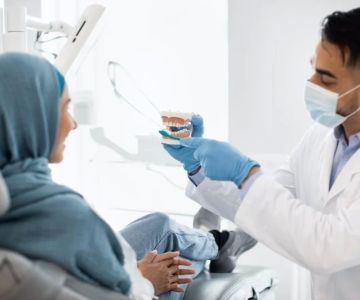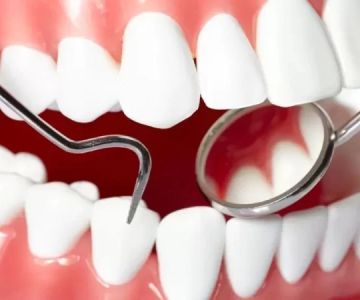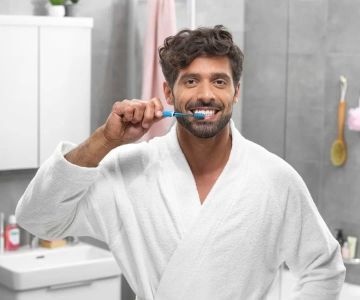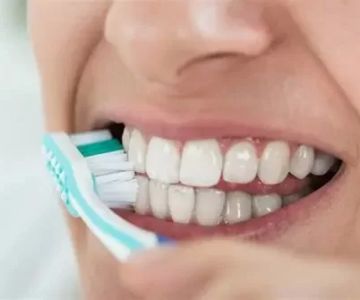What are the Best Practices for Brushing Your Teeth?
Maintaining optimal oral hygiene is crucial for overall health, and one of the simplest ways to do this is through effective tooth brushing. In the hustle and bustle of daily life, it's easy to rush through this essential part of your routine. Yet, proper brushing techniques can prevent cavities, gum disease, and even more serious health issues. At Dentistry Toothtruth, we're committed to providing you with the necessary knowledge to enhance your oral care practices. In this article, we will delve into the best practices for brushing your teeth, emphasizing methods that will not only maintain your smile but also improve your dental health over time.
1. Choosing the Right Toothbrush
The foundation of effective tooth brushing begins with selecting the right toothbrush. For the majority of users, a soft-bristled toothbrush is advisable as it efficiently cleans the teeth without causing damage to the enamel or irritating the gums. The size and shape of the brush should allow you to reach every area of your mouth with ease. Many dental professionals recommend electric toothbrushes for their superior plaque removal capabilities and built-in timers that ensure adequate brushing time.
According to the American Dental Association (ADA), using a toothbrush with softer bristles is critical for protecting tooth enamel and preventing gum recession. An electric toothbrush can make brushing more convenient and effective, particularly for individuals with limited manual dexterity. Regular replacement of your toothbrush—every three to four months—is also recommended to ensure that bristles remain in good condition and prevent bacterial build-up. When selecting a toothbrush, consider ergonomic designs and ADA approval seals for optimal results.
2. Proper Brushing Technique
Technique is just as important as the tools you use. Hold your toothbrush at a 45-degree angle to your gums and gently move the brush back and forth in short, tooth-wide strokes. Ensure you cover the outer surfaces, inner surfaces, and chewing surfaces of the teeth. For the fronts of teeth, don’t forget to tilt the brush vertically and make several up-and-down strokes.
According to studies, a brushing duration of two minutes is optimal, though brushing time is often shorter in practice. Implementing a systematic approach—such as dividing the mouth into quadrants and spending 30 seconds on each—can enhance thoroughness. Be gentle; applying too much pressure can lead to enamel erosion and gum damage. Leveraging timers in electric toothbrushes can aid in meeting the recommended duration without over-exertion.
3. The Role of Toothpaste
While toothpaste might seem secondary, it plays a pivotal role in dental health. Look for toothpastes containing fluoride, which strengthens tooth enamel and helps to reverse early signs of tooth decay. Specialized toothpastes are available for those with specific conditions, such as sensitivity or whitening desires, and selecting the right one can align with your individual oral health goals.
Fluoride toothpastes operate by enhancing the mineralization of teeth, making them more resistant to acid attacks from plaque bacteria and sugars. For individuals with sensitivity issues, research recommends toothpastes containing potassium nitrate or strontium chloride. Whitening toothpastes that contain mild abrasives can assist in stain removal without causing damage when used correctly. Discuss with your dentist to tailor choices toward your specific dental requirements.
4. Completing the Oral Hygiene Routine
Brushing alone isn't enough for complete oral hygiene. Complement your brushing routine with flossing and mouthwash. Flossing removes plaque and food particles where a toothbrush can't reach—between teeth and under the gumline. An antimicrobial mouthwash can further reduce plaque, prevent gingivitis, and freshen breath.
Statistical data suggests that individuals who incorporate flossing into their routine are significantly less prone to gum disease. Mouthwash, when used correctly, can decrease oral bacteria, though it's crucial to ensure that it complements rather than replaces brushing and flossing. Floss at least once a day and use mouthwash as an adjunct to your brushing regimen for comprehensive care.
5. Regular Dental Check-Ups
No oral hygiene routine is complete without regular visits to your dentist. Professional cleanings and examinations can identify issues like cavities or gum disease before they become serious. Dental professionals can also provide personalized advice that goes beyond basic brushing techniques and product recommendations.
Dental check-ups, ideally scheduled every six months, are critical in maintaining oral health. They facilitate early detection of potential concerns and enable timely interventions. Customized care from your dental professionals at Dentistry Toothtruth ensures a long-term strategy for preserving your smile.
Conclusion
Adhering to the best practices for brushing your teeth can facilitate a lifetime of healthy smiles and prevent common dental issues. By choosing the right tools, implementing effective techniques, and incorporating comprehensive oral care routines, you safeguard your oral health. Remember, consistency is key. Take the time to practice these tips and see a dental professional regularly for advice tailored to your needs. For more expert guidance, visit Dentistry Toothtruth to learn about personalized oral care strategies.







 Dr. Sandra Villamil, DDS4.0 (21 review)
Dr. Sandra Villamil, DDS4.0 (21 review) Doc Bresler's Cavity Busters4.0 (363 review)
Doc Bresler's Cavity Busters4.0 (363 review) ProSmile Dentistry: Parisa Zarbafian DDS5.0 (29 review)
ProSmile Dentistry: Parisa Zarbafian DDS5.0 (29 review) Stratford Dental Center4.0 (43 review)
Stratford Dental Center4.0 (43 review) Dr. John M. Clifford, DDS0.0 (0 review)
Dr. John M. Clifford, DDS0.0 (0 review) Shawn McCarthy, DDS, MS0.0 (0 review)
Shawn McCarthy, DDS, MS0.0 (0 review) The Importance of Oral Health Education During Pregnancy for a Healthy Pregnancy
The Importance of Oral Health Education During Pregnancy for a Healthy Pregnancy Best Tips for Brushing Your Teeth Properly for Healthy Gums: Essential Techniques for Oral Health
Best Tips for Brushing Your Teeth Properly for Healthy Gums: Essential Techniques for Oral Health Why Skipping Dental Checkups Can Lead to Bigger Oral Health Problems
Why Skipping Dental Checkups Can Lead to Bigger Oral Health Problems Advantages of Porcelain Dental Restorations
Advantages of Porcelain Dental Restorations How Can Diabetes Cause Tooth and Gum Problems? Preventing and Managing Oral Health Issues
How Can Diabetes Cause Tooth and Gum Problems? Preventing and Managing Oral Health Issues Healthy Habits for Promoting Good Oral Health and Hygiene: Tips for a Healthy Smile
Healthy Habits for Promoting Good Oral Health and Hygiene: Tips for a Healthy Smile